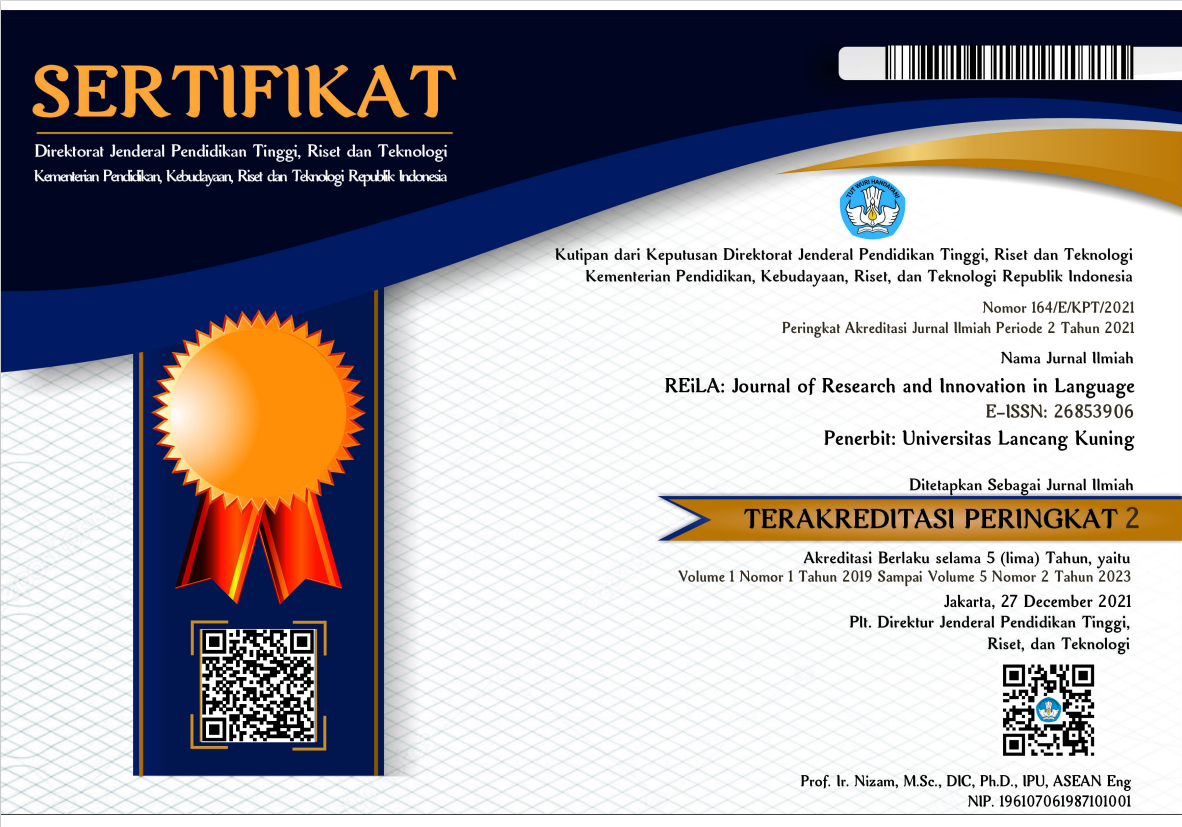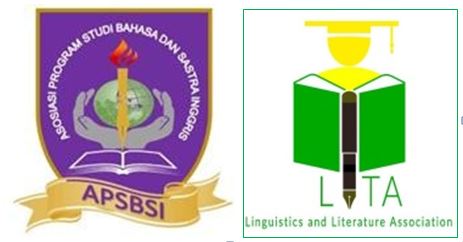Clausal-Internal Switching in Urdu-English: An Evaluation of the Matrix Language Frame Model
Abstract
The core of this paper is to employ the Matrix Language Frame (MLF) model on Urdu-English clausal-internal switching to identify whether the Matrix Language Frame model potentially accounts for the bilingual linguistic competence efficiently. For this, a qualitative methodology has been adopted for this study. For empirical evidence, data has been taken from eighty Urdu- English bilinguals within a naturalistic setting after categorizing them into four groups, and each group has 20 participants. After conducting audio-recording through non-participant interviews in an informal setting, the collected data was transcribed. The MLF model posited that two languages are fused in a single Intra-CP of a mixed string. The linearly dominant language is Matrix language (ML) that incorporates only late outsider system morphemes. Odd is Embedded language (EL) that supplies content morphemes satisfying the system morpheme principle (SMP) uniformly and morpheme order principle (MOP). The present study ubiquitously scrutinizes that naturalistic data of Urdu-English bilinguals highlights the innovative results: it predicts that Matrix language (ML) is unidentified in intra-CP, no late outsider system morphemes linearize a code-switched sentence, unparalleled constituent and clausal structure, System Morpheme Principle (SMP) and Morpheme Order Principle (SMP) provides the illegitimate output and computes ungrammatical sentences hence; the Matrix Language Frame model redundantly and inconsistently accounts for Urdu-English naturalistic data and its principles have failed to compute Urdu-English naturalistic data.
Downloads
References
Al-Bataineh, H., & Abdelhady, S. (2019). Cree-English intrasentential code-switching: Testing the morphosyntactic constraints of the Matrix Language Frame model. Open Linguistics, 5(1), 706-728.
Ali, A., Jabbar, Q., Malik, N. A. (2020). No Functional Restriction, No Fusion Linearization on intrasentential Code Switching: A Minimalist Explanation. International of English and Education, 9(4), 130–145.
Ali, A., Jabbar, Q., & Kiani, H. (2021). Clausal- Internal Scrambling in Urdu Language: A Derivation by Phases. REiLA : Journal of Research and Innovation in Language, 3(1), 52–60. https://doi.org/10.31849/reila.v3i1.5968
Aslam, S., Saleem, T., & Afridi, M. S. (2021). Syntactic dominance in Pashto-English bilinguals: An application of Mayer-Scotten’s matrix language frame model. Ilkogretim Online, 20(5), 1319–1341. https://doi.org/10.17051/ilkonline.2021.05.147
Balam, O., Parafita Couto, M. D. C., & Stadthagen-González, H. (2020). Bilingual verbs in three Spanish/English code-switching communities. International Journal of Bilingualism, 24(5-6), 952-967.https://doi.org/10.1177/1367006920911449
Belazi, H. M., Rubin, E. J., Toribio, A. (2011). Code-Switching and X-Bar Theory: The Functional Head Constraint. Linguistic Inquiry, 25(2), 221–237.
Chomsky, N. (2021). Linguistics Then and Now: Some Personal Reflections. Annual Review of Linguistics, 7, 1-11.
Forker, D. (2019). Sanzhi–Russian code switching and the Matrix Language Frame model. International Journal of Bilingualism, 23(6), 1448-1468, https://doi.org/10.1177/1367006918798971.
González-Vilbazo, K., & López, L. (2011). Some properties of light verbs in code-switching. Lingua, 121(5), 832–850. https://doi.org/10.1016/j.lingua.2010.11.011.
González-Vilbazo, K., & López, L. (2012). Little v and parametric variation. Natural Language and Linguistic Theory, 30(1), 33–77. https://doi.org/10.1007/s11049-011-9141-5.
Ihemere, K. (2017, January). Igbo-English intrasentential codeswitching and the Matrix Language Frame model. In 46th Annual Conference on African Linguistics (pp. 539-558). Language Science Press.
Jake, J. L., & Myers-Scotton, C. (1997). Codeswitching and compromise strategies: Implications for lexical structure. International Journal of Bilingualism, 1(1), 25–39. https://doi.org/10.1177/136700699700100103.
Jake, J. L., Myers-Scotton, C., & Gross, S. (2002). Making a minimalist approach to codeswitching work: Adding the Matrix Language. Bilingualism: Language and Cognition, 5(01), 69–91. https://doi.org/10.1017/s1366728902000147.
Jake, J. L., Myers-Scotton, C., & Gross, S. (2005). A response to MacSwan (2005): Keeping the Matrix Language. Bilingualism, 8(3), 271–276. https://doi.org/10.1017/S1366728905002300
Khan, A. A., & Khalid, A. (2018). Pashto-English codeswitching: Testing the morphosyntactic constraints of the MLF model. Lingua, 201, 78-91. https://doi.org/10.1016/j.lingua.2017.09.002
MacSwan, J. (2005a). Codeswitching and generative grammar: A critique of the MLF model and some remarks on “modified minimalism”. Bilingualism: language and cognition, 8(1), 1-22. https://doi.org/10.1017/S1366728904002068
Macswan, J. (2005b). Remarks on Jake, Myers- Scotton and Gross‘s response: There is no―matrix language. Bilingualism: Language and cognition, 8(3), 277-284 https://doi.org/10.1017/S1366728905002312
MacSwan, J. (2019). A reply to Malik. Lingua: International review of general linguistics, (217), 101-108. https://doi.org/10.1016/j.lingua.2018.10.014
Malik, N. A. (2017). No mixed grammars, no phonological disjunction: A new perspective on intra-sentential code-switching. Lingua, 194, 51-66. https://doi.org/10.1016/j.lingua.2017.05.002
Maqsood, B., Saleem, T., Aziz, A., & Azam, S. (2019). Grammatical constraints on the borrowing of nouns and verbs in urdu and english. SAGE Open, 9(2), 2158244019853469. https://doi.org/10.1177/2158244019853469
Myers-Scotton, C. (1992). Comparing codeswitching and borrowing. Journal of Multilingual and Multicultural Development, 13(1–2), 19–39. https://doi.org/10.1080/01434632.1992.9994481
Myers-Scotton, C., & Jake, J. L. (2000). Testing the 4-M model: An introduction. International journal of bilingualism, 4(1), 1-8.
Myers-Scotton, C., & Jake, J. L. (1995). Matching lemmas in a bilingual language competence and production model: Evidence from intrasentential code-switching. Linguistics, 33(5), 981–1024. https://doi.org/10.1515/ling.1995.33.5.981
Myers-Scotton, C., & Jake, J. L. (2000). Four types of morphemes: Evidence from aphasia, code-switching, and second-language acquisition. Linguistics, 38(370), 1053–1100. https://doi.org/10.1515/ling.2000.021
Myers-Scotton, C. M., & Jake, J. L. (2017). Revisiting the 4-M model: Codeswitching and morpheme election at the abstract level. International Journal of Bilingualism, 21(3), 340–366. https://doi.org/10.1177/1367006915626588.
Myers-Scotton, J. J. (2013). Non-finite verbs and negotiating bilingualism in codeswitching: Implications for a language production model. Bilingualism: Language and Cognition, 1–15. https://doi.org/10.1017/S1366728913000758.
Sankoff, D. (1998). A formal production-based explanation of the facts of code-switching. Bilingualism: language and cognition, 1(1), 39-50.
Shim, J. Y. (2016). Mixed verbs in code-switching: The syntax of light verbs. Languages, 1(1), 8. https://doi.org/10.3390/languages1010008.
Sobin, N. J. (1984). On code-switching inside NP. Applied Psycholinguistics, 5(4), 293-303. https://doi.org/10.1017/S0142716400005191.
Van Gelderen, E., & MacSwan, J. (2008). Interface conditions and code-switching: Pronouns, lexical DPs, and checking theory. Lingua, 118(6), 765-776. https://doi.org/10.1016/j.lingua.2007.05.003.
Zahra, F. T., Saleem, T., Abdullah, A. F., & Khan, M. A. (2021). Testing Matrix Language Framework Model On Urdu-English Online News Entity: A Creative Approach. Multicultural Education, 7(1). https://doi.org/10.5281/zenodo.4460350.










